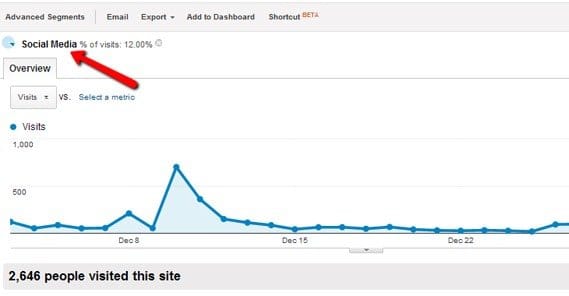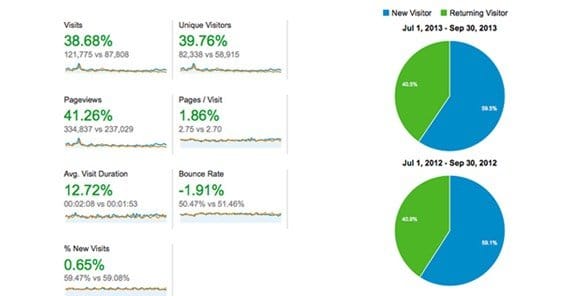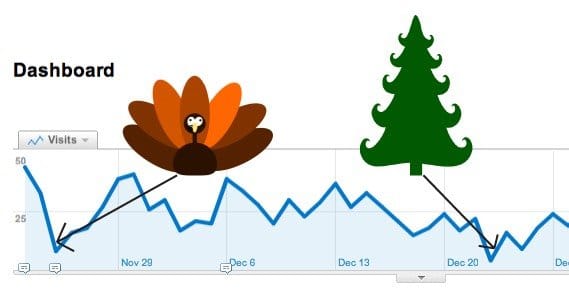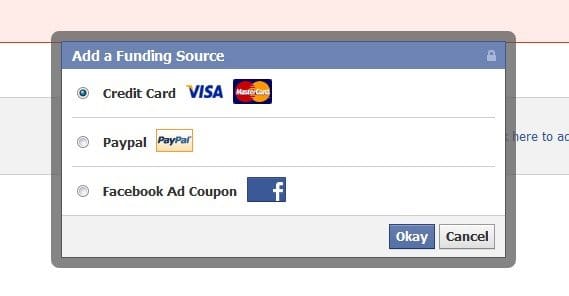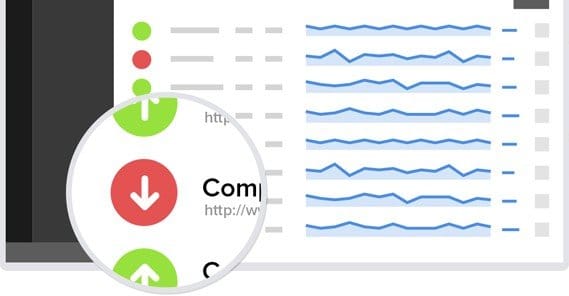Investigating a Drop in Traffic on Google Analytics

One of the most frightening things to encounter as a webmaster is logging in to your analytics to see a drop in traffic. There’s a moment of blind panic, and another, longer moment of introspection. Did you do something to cause this? Was it an external force? Did a piece of technology fail, or did Google decide you were doing something wrong?
Most of us then stop and take a deep breath, or two, or three, and set about discovering what’s wrong. Often times it’s actually a very minor issue, and can be solved in minutes. Sometimes it’s deeper or more insidious, though, so it pays to take a look.
The only thing worse, of course, is when your client is the one discovering the drop in traffic. They couldn’t sleep and decided to check their analytics at 3 a.m. and now here you are, 4:30 in the morning, rushing to the office so you can take a look at what has them in a tizzy. If you’re lucky, it’s an actual problem, and not just a misreading that led to a frantic phone call.
Here’s a general flowchart you can use to go through troubleshooting. Take it from the top, and if you haven’t solved the problem move to the next step.
How Bad Was The Drop?
One thing a lot of people seem to miss in the frenzy to figure out what happened is the question of whether or not anything actually happened at all. Traffic has a natural rise and fall. A drop in traffic isn’t necessarily a bad thing. No website in the world has a constant growth from day to day; there are rises and falls along the way. What you hope for is a general incline form month to month and year to year, not from day to day and hour to hour.
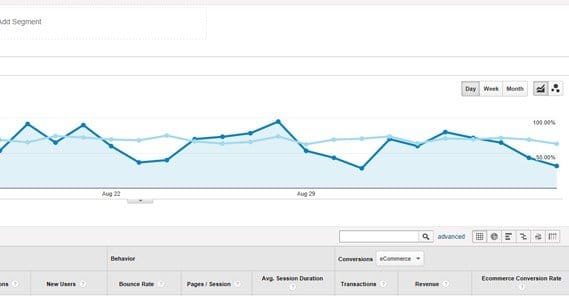
The first thing I like to check is how much of a drop there actually was. I’ve seen site owners call up their marketing team and rave about horrible traffic drops when they were really just zoomed in on the timeline, so a normal weekend drop looked fantastically bad. When you zoom out and put things in perspective, your traffic is a series of peaks and valleys, with the valleys centered around weekends.
The second thing to check is how steep the drop was. Did it drop suddenly, overnight, or has it been on a slow and steady decline for days or weeks? Did it drop and start to rise again, or has it settled at a lower level? If you see a chart like this one, you know you’re looking at a legitimate issue, rather than a fluke.
Another thing to check is whether or not your traffic is already on its way back to normal. Sometimes a decline in traffic will be a temporary issue and will restore itself before you even have a chance to act. You still might be concerned about why it happened, but it takes a lot of the urgency out of it.
Which Traffic Source Dropped?
Once you’ve identified that, yes, there is in fact a problem with your traffic, you get to start investigating why it happened.
The first thing to check is what your traffic sources look like individually, so you can figure out if any one of them dropped.
- Direct traffic is traffic that came to your site through typing in the URL or through a bookmark. There is no referral information. There are issues with direct traffic, which we wrote about here, but it’s not important that it be accurate right now; just that the metrics didn’t change before and after the drop. If this is the kind of traffic that dropped, you might wonder if a competitor launched a high profile ad campaign, or if your usual landing page is broken.
- Organic traffic is traffic that arrives from Google or other search engines. If organic traffic is the type of traffic that dropped, you have to consider why you have lost placement in search rankings or been removed from those rankings. Did you make any SEO changes, or did Google push an algorithm update?
- Paid traffic is traffic that comes through advertising of some sort, usually Google’s own ad programs, but also other flagged-as-paid traffic sources. If your paid traffic is the source that dropped, you have to check if an ad campaign ended, an ad account was suspended, or if there’s a payment issue.
- Referral traffic is traffic from links on referring websites. If referral traffic is the source that dropped, you’ll need to check with your partners; maybe one of them removed tags or links, or their site had issues of its own.
- Social traffic is traffic from social network referrers, like Facebook, Twitter and Pinterest. If social traffic dropped off, you’ll want to check to see whether or not something happened to your social profiles. Ideally, it was simply a lapse of scheduled posts. In worse cases, it might have been a follower purge, a banned or suspended account, or a hacked page.
If all of your traffic sources dropped at once, you have to consider either an issue with your site as a whole, or an issue with your analytics code. If some of the code broke on some of your pages, it can look like traffic drops, and if it broke across your whole site, it looks like you have no more traffic.
Is the Problem With New or Returning Users?
Under the Audience reports section, under behavior, you will find a tab labeled New vs Returning. This shows differences in behavior between new users and users that have cookies for your site indicating that they’ve been there before. It’s a little muddy; returning users might not save cookies and could appear as new, for example. This can lead to some reporting issues.
If new user traffic is the traffic that dropped, you have to look towards your acquisition, your ads, and your landing pages. Something, somewhere along the line, broke in such a way as to drop your traffic of new user acquisition. Maybe ads ended or a landing page broke, I don’t know. Give it a look all along the funnel.
On the other hand, if it’s primarily returning users that are dropping off, you have to look at your site structure, your content, and your links. It’s possible that some pages broke and are returning 404 errors, which drives users away. It might be an issue with site speed, keeping users from sticking around. A poor user experience is keeping them away, and that’s causing a drop in traffic.
Was There a Holiday or Disaster?
I lump these two together because they are both abnormalities that can cause a drop in traffic, and the disaster side doesn’t even have to happen to or near you.
On the holiday side, unless you’re running a highly promoted holiday themed sale of some sort, chances are your users aren’t necessarily going to be coming in or sticking around. Even in this connected age, most people like to spend holidays with their families, on vacation, or otherwise away from the Internet. Depending on what your niche happens to be, this could mean a pretty steep drop in traffic for that day or that weekend. If a mid-sized or large holiday happened, don’t worry about your traffic unless it doesn’t come back when the next work week starts. If it’s a permanent drop, then you need to worry.
On the disaster side, you need to start looking around for reasons people wouldn’t be checking your site. A terrorist attack is pretty extreme and would only really affect you if your audience is primarily in the location attacked. However, something like a wildfire, an earthquake, or a tornado can take out Internet hubs or data centers. If your web host data centers are taken down by a natural disaster, your site can be intermittent or totally down, and that will disrupt your traffic flow substantially. Disasters in your primary area of business, meanwhile, distract people from whatever you’re selling and will lead to lower traffic numbers.
There’s not much you can do about either of these, realistically. You just have to weather the storm and hope things work out on the other side. It’s also why you should always have backups of your data in locations other than your primary operations and web host. A disaster recovery plan is a must, and yet it’s ignored by most businesses.
Did an Ad Campaign or Traffic Buying Campaign End?
It’s surprisingly easy to forget about your paid ads if you’re not immersed in running them on a daily basis. If you work with them at the beginning of the month, and you’re used to a “set and forget” method of advertising, you might reach the end of the month and not remember they were even in effect until they stop. The drop in traffic – specifically paid traffic – heralds an issue with paid advertising.
There are other reasons your paid ads might have stopped, though. Perhaps the ad network detected unnatural activity on your site and decided to suspend your account temporarily or permanently.
There might also be an issue with payments. I’ve seen traffic drop and marketers get called for frantic troubleshooting simply because the business was issued a new credit card and forgot to update their expiration date. Everything else – number, name, etc – was the same, just the date changed, but that made the old information invalid and made a charge fail. That suspended the ads until the issue could be resolved, which caused a drop in traffic for seemingly no reason. Let me tell you, that particular business owner was chagrined when confronted. Not a bad problem, all around, at least.
Did Your Web Host Have Downtime?
Sometimes the traffic drop is evenly distributed throughout all of your traffic sources, more or less. That indicates an issue with something other than just your site. Your entire web host may have dropped out for some amount of time. The worse the traffic drop, the longer or the more peak hours timing when it happened.
You can see this if you go hour by hour in your traffic logs, looking for abrupt drops to zero. If your web host is down and isn’t serving your site to anyone, you won’t be recording any traffic for those times.
If your web host is dropping, you need to call them to figure out why. If they had a one-time hardware failure or issue, that can be excused, though if they were down for a significant length of time you may want to consider finding a company with a better recovery plan or redundant backups.
Did Google Update Their Algorithm?
If your organic traffic is the source that dropped the most, you need to check to see if you did anything that might have caused it. A change in URL structure, a change in meta data throughout the site, or a significant change in text can all have an effect, though it can range from minor or beneficial to majorly detrimental depending on the change.
On the other hand, if you didn’t change anything, it could have been a change with Google. The early days of the Panda updates are behind us, but that was a prime example of what might happen; you see a big drop in traffic with no cause on your end. The cause was Google simply raising the bar on their minimum standards. Your content no longer cut it, so you lost ranking, though you changed nothing.
You can see a reading of Google updates tracked by Moz over here. It’s not always up to the minute, but if there’s a large change you can often see it on SEO sites like Search Engine Journal, Moz, or SEO Roundtable. Check SEO news if you suspect an algorithm change that hurt you.
Did You Receive a Manual Action?
If there was no algorithm change, it’s possible you received a manual action. Manual actions are taken by Google against sites that are breaking specific rules, and they can be obnoxious to recover from. Thankfully, at least, they are announced; you can see them in your Webmaster tools dashboard. Google has documented what they are and how you can see and fix them here.
If after all of that you still don’t know why your traffic has dropped, well, you’ll need to consult with someone more experienced with SEO. There’s probably some minor setting somewhere, or a flaw in your tracking, that would be too much effort for me to try to document here but may be easy to detect and fix. Or maybe not! There are a thousand other reasons, and you’ll simply have to poke around until you figure out what caused your drop.
 ContentPowered.com
ContentPowered.com
